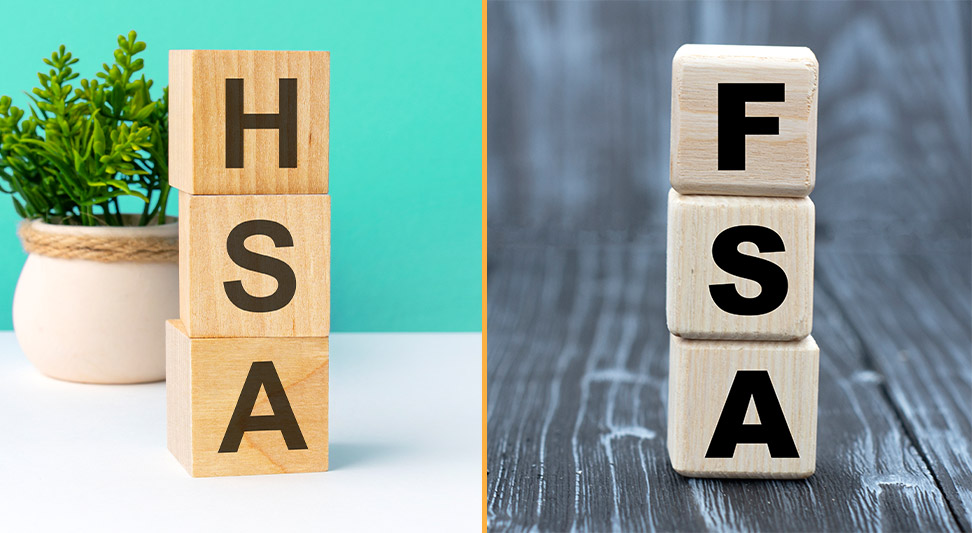Imagine a world where you no longer rely on glasses or contact lenses to see clearly.
Thanks to the transformative power of LASIK, this dream can become a reality for millions of people with vision problems.
Surprisingly, many people don’t realize they can maximize their LASIK savings through Flexible Spending Accounts (FSAs) and Health Savings Accounts (HSAs).
If you’re ready to embark on your tax-advantaged LASIK journey, let this blog post serve as your guide to understanding the benefits, differences, eligibility requirements, and contribution limits of FSAs and HSAs and how you can harness them to help pay for LASIK and similar medical procedures.
LASIK Is a Qualifying Medical Expense
The Internal Revenue Service (IRS) recognizes LASIK and other laser eye surgeries as qualifying medical expenses that can be covered or reimbursed by both FSAs and HSAs. This is fantastic news for those with FSA or HSA funds or those who have an FSA or HSA option and are interested in LASIK.
While LASIK in Oklahoma City is a qualifying expense, keeping your receipts and records from your procedure is important if the IRS asks to prove your costs were eligible.
Understanding FSAs and HSAs

Before we jump into the world of LASIK and how FSAs and HSAs can play a crucial role in financing it, let’s first understand what these accounts are and their unique benefits.
Flexible Spending Accounts (FSAs)
An FSA is a tax-advantaged savings account that allows you to set aside pre-tax dollars from your paycheck for qualified medical expenses. FSAs are offered to employees by an employer as a part of an employer-sponsored health plan.
FSA usage depends on the employer’s policy. Some FSAs have debit cards that you can use to pay for qualifying expenses, while others may require you to pay out of pocket and then submit a claim for reimbursement.
Qualifying expenses include doctor visits, prescription medications, dental work, and LASIK. The key advantage of an FSA is that it helps you reduce your taxable income, meaning you pay less in taxes.
Health Savings Accounts (HSAs)
HSAs are also tax-advantaged savings accounts designed to help you cover qualified medical expenses. Unlike FSAs, they can be employer-sponsored or opened by individuals as long as they have a high deductible health plan (HDHP) with a deductible greater than $1,500 for an individual or $3,000 for a family.
HSAs offer a triple tax advantage: contributions are tax-deductible, earnings grow tax-free, and withdrawals for qualified medical expenses are tax-free. This makes HSAs an attractive choice for those looking to save and invest now for future medical needs, including LASIK.
Reducing Taxable Income and Paying for Medical Expenses Tax-Free
One of the primary benefits of using FSAs and HSAs is the tax advantage they provide. Contributing to these accounts effectively lowers your taxable income, putting more money back in your pocket.
For FSAs, the contributions you make to your FSA are exempt from federal income tax, Social Security tax, and Medicare tax. For example, if you earn $50,000 annually and contribute $2,000 to your FSA, your taxable income is reduced to $48,000.
Contributions to an HSA are tax-deductible, meaning they are excluded from your taxable income. This reduces your overall tax liability, allowing you to keep more of your hard-earned money in your pocket.
Comparing FSAs and HSAs

While FSAs and HSAs offer attractive tax benefits and can be used to pay for LASIK, they have some key differences. Let’s compare them side by side:
Paying for Qualifying Medical Expenses
- With an FSA, you generally pay for the medical cost and get reimbursed after you’ve submitted a claim to the FSA, along with a receipt or bill and a statement proving your insurance doesn’t cover the expense. Some FSAs issue a debit card that you can use to pay for medical expenses.
- An HSA operates like a savings account for medical expenses. You can access the money in your HSA and pay for medical expenses with an HSA debit card, by reimbursing yourself after paying out of pocket, or by paying providers directly from your HSA.
Eligibility Requirements
- FSAs are offered only through employers. There are typically no eligibility requirements beyond being employed and opting into the plan during the open enrollment period.
- To contribute to an HSA, you must be enrolled in a High-Deductible Health Plan (HDHP). Additionally, someone else cannot claim you as a dependent on their tax return.
Employer’s Role
- FSAs are offered to employees as part of an employer-sponsored health plan. Employers are not required to contribute to FSAs, but they can add up to $500 to an employee’s plan whether or not the employee contributes. After $500, an employer can only match employee contributions dollar-for-dollar. Unused FSA funds go back to the employer if an employee changes jobs.
- HSAs can be offered by an employer or opened by an individual regardless of employment status as long as the individual has a high deductible health plan (HDHP). Employers are not required to contribute to HSAs, although they often do. Employer contributions count toward the individual’s maximum annual contribution limit. HSAs are portable, meaning you can maintain and contribute to your account even if you switch employers.
Carryover Allowances
- In 2021, the IRS changed its strict “use it or lose it” rules for unused FSA funds at the end of the year. Employers can choose one of two options for unused funds. They can either give employees a grace period of up to 2.5 months to spend their balances or let participants roll over up to $610 of 2023 funds into the next plan year and forfeit the rest.
- HSAs do not have a “use it or lose it” provision. Your HSA funds roll over indefinitely, allowing you to accumulate savings over time for medical expenses, including LASIK, as long as you’re enrolled in an HDHP.
2023 and 2024 Contribution Limits
The rules for contributing to FSAs and HSAs can vary based on your coverage type, whether you have self-only or family coverage, and whether you’re eligible for catch-up contributions. Here are the contribution limits for FSAs and HSAs for 2023 and 2024:
Health FSA Contribution Limits
- The 2023 contribution limit is $3,050.
- The 2024 contribution limit is projected to increase to $3,200.
HSA Contribution Limits
- The 2023 contribution limit for self-only coverage is $3,850.
- The 2023 contribution limit for family coverage is $7,750.
- The 2024 contribution limit for self-only coverage is $4,150.
- The 2024 contribution limit for family coverage is $8,300.
- For individuals aged 55 and older, an additional catch-up contribution of $1,000 is allowed.
Using Your FSA or HSA for LASIK at nJoy Vision

Depending on your account balance, your HSA or FSA funds could help cover a significant portion of the cost of your LASIK procedure. If your account funds don’t entirely cover the total cost, you may need to cover the remaining amount out of your pocket.
At nJoy Vision, we understand that budgeting for LASIK can be a concern. If your FSA or HSA funds fall short, don’t worry! We offer a convenient solution to finance the remaining balance through our trusted partner, CareCredit.
Furthermore, we have partnerships with various vision insurance providers that often extend exclusive discounts to their members for specific laser eye procedures, such as LASIK. Prior to your consultation, be sure to check with your insurance provider and let our friendly nJoy Vision patient specialists know if your plan offers partial coverage or discounts for LASIK.
We’re here to make your LASIK journey as smooth, affordable, and tax-advantaged as possible!
Schedule your FREE OKC LASIK consultation at nJoy Vision
Or call

